A bit about me
As a new contributor to Macfilos, a word of introduction. Mostly I take pictures only when I’m travelling. In Delhi, I don’t carry a camera when I’m out and about. But at least once a year I like to get out of the city and use that opportunity to take some pictures. A few years ago North-East India beckoned — I’d never been there. That was in 2014. I’ve gone back every year since, sometimes twice, once even three times in the year. And along the way I discovered an intriguing new sport, Teer
The North-east
North-East India is a collection of states we like to refer to as the Seven Sisters. They are made up of Arunachal Pradesh, Assam, Manipur, Meghalaya, Mizoram, Nagaland, and Tripura. They have a younger “brother” too, the state of Sikkim.
Together, they share their borders with Tibet, China, Myanmar, Bangladesh, Nepal and Bhutan. Getting to any of the north-east states means a two-and-a-half-hour flight out of Delhi to Guwahati, Dibrugarh or Jorhat in Assam. You can imagine the landscape, people, language, customs and food are all very different from Delhi.
The trip to Meghalaya
Last June, my wife came along when I went back to Meghalaya. The state is fortunate to have some of the best highways in the North-East, part of the Asian Highway network, cutting through the Khasi hills and reducing travel time. Accompanying us on the trip was my trusty and knowledgeable guide and friend, Bamin Baro from Arunachal, who met us at the airport in Guwahati with his niece, Guddi, a guide in her own right. We spent eight glorious days in Shillong (the state capital), Cherrapunjee (the former record holder for the most amount of rainfall in the world), and Mawlynnong (the cleanest village in the country).
Teer
On our second day in Shillong, Baro introduced us to Teer. I’d never heard of it before on an earlier trip to Meghalaya, but apparently it is an archery contest held every day in Shillong where people bet on the results. Though archery has been for centuries a traditional sport of the Khasis, a local tribe, betting was a more recent development. It was banned in the 1970s, despite protestations by the bookies, and legalised only after the Government realised in 1982 that it was a good source of revenue. Today it employs thousands, mostly women, at bookie counters all over the city. As the results of the contests are declared every evening, the winning numbers are posted on teer signboards.
To get to the teer grounds we left our car near Ward’s Lake and took a taxi to the Polo Ground. The sport is a big draw for cabbies so getting a ride home shouldn’t be a problem. The venue was a bit of a surprise. I had expected it to be held in an open field like a sports ground. But it was a walled empty plot with a semicircular covered corridor running around the periphery. Already there were people waiting for the 3.30 pm start.
The rules
The rules of the contest are pretty simple. Every day two clubs compete against each other over two rounds. In each round, fifty archers shoot between ten and thirty arrows each at a straw target, tied to a stake in the ground, for an allotted time of five minutes. At the end of that time, two officials yank up a cloth to cover the target. Arrows that hit their mark are sorted into bundles of ten. Officials count the arrows and the last two digits of the total count are declared the winning numbers. For example, if of the 1,500 arrows shot in a round, 1,050 hit their target the winning number for the round would be 50. Simple, eh?
Calculating the winning number
Choosing a winning number is a tad more complicated. That involves knowledge of the skill level of the competing teams. If a team is considered strong then the percentage of arrows finding their mark should be high. If, on the other hand, one considered the archers not very skilful then one could hedge one’s bet on a lower winning percentage.
There is, however, a more interesting way to predict a winning number by interpreting one’s dream from the night before. The presence of a man or woman in the dream means one should bet on a 6 or 5. If in the dream a man and woman appeared to be quarrelling then the winning number would be 37. Dreams of an erotic nature mean one should place winning bets on 03, 08, 13 and so forth. Dreams around money mean 00, 14, 15 and so on. There are always a couple of guys you can find who would swear by this method.
Bookies sat behind desks, open notebooks at hand, speaking into their cell phones, jotting down bets coming in from all over the state. We hadn’t quite understood the rules yet. Nevertheless, I put 10 bucks down on number 25 to win. Baro put his wager on number 33 (on my advice, which turned out to be bad). We received a little piece of paper each with the numbers on them as the receipt for our bets.
The contest
When the announcement came over the speaker for the contest to begin, archers who had taken up positions around the corridor dropped to their haunches and raised their bows. Arrows whizzed past, thudding into the target which soon bristled like a hedgehog. The chap nearest us went about drawing his bow unhurriedly and mechanically. As the time limit approached, an official counted down the seconds. At time up, two officials at either end of a long rope yanked up a gunny cloth and prevented any further shots from reaching the target. Round one was over in ten minutes.
The results
After the round, the arrows were collected, sorted and counted according to their serial numbers. Spectators gathered around and I spotted a couple of foreigners as well. Arrows in bundles of ten were counted and placed in a sort of grid in the ground. The arrows that don’t make a full bundle of ten were also counted. For example, if there were 30 bundles of 10 arrows each and 7 arrows that didn’t make a full bundle, the winning number from the round was taken as 37. It took us a while to get our heads around the system. Anyway, we were down 20 rupees.
The X Vario
On this trip, I had my X Vario — just three years old but well-travelled on trips to the North-East, Europe and Singapore. It has permanently replaced my Panasonic LX100. I’ve stopped bothering with a tripod; instead, I try and remember to keep an eye on the shutter speed when indoors.
Staircase leading up to the Mary Help of Christians Cathedral, in Shillong A church against a moody sky I stopped to photograph in Pynursla on the way to Cherrapunjee
I keep the camera on silent mode so I can be inside a church (of which there are many in Meghalaya) so no one will be disturbed. I don’t use flash for the simple reason that I don’t know how to. And I don’t use the autofocus either because I prefer manually focusing through the attached EVF. I love the lens, despite it not being the fastest arrow in the quiver.
It is perfect for my needs and I find that most of my shots fall in at the two ends. Since I take most of my pictures travelling, I don’t get to spend a whole lot of time in a particular place and I have to accept the light for what it is. In India, there’s plenty of it. Though the country follows the one time zone across its width, the sun rises and sets almost an hour earlier in the north-east than in Delhi. I carry a spare battery but usually, I can come back from a two-week trip with just over 600 photos. I guess old habits die hard.

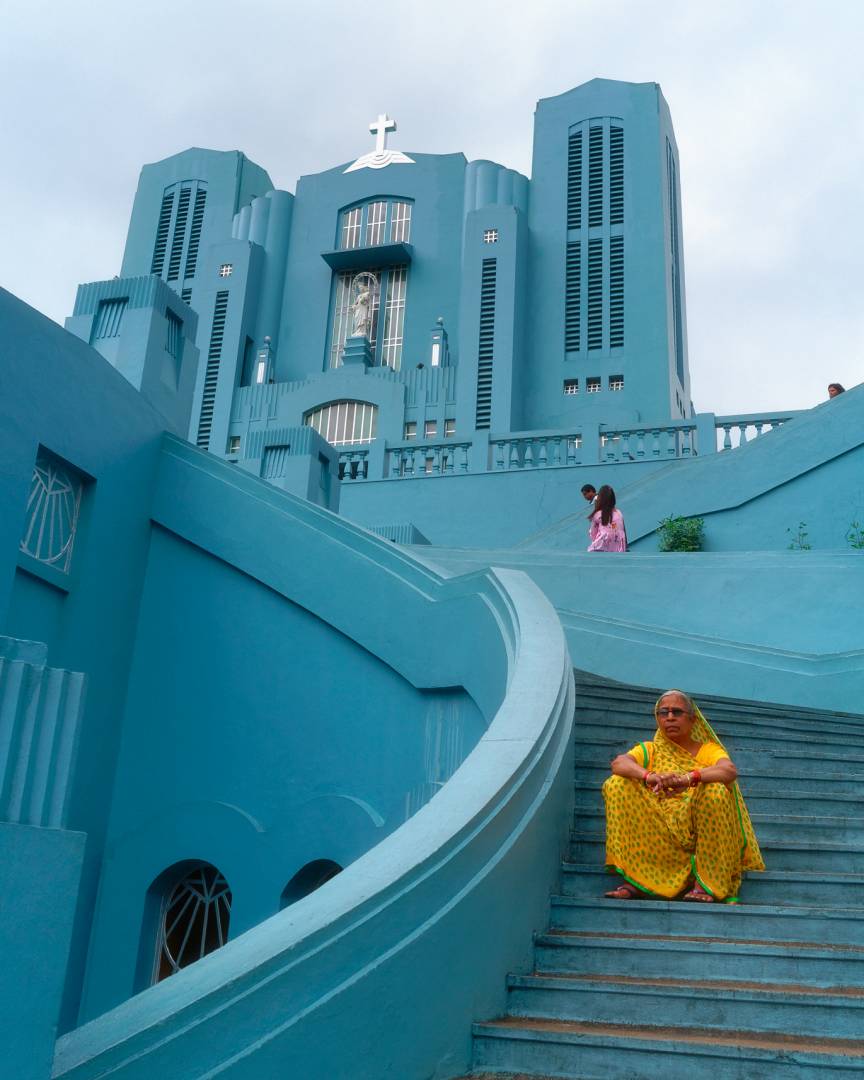
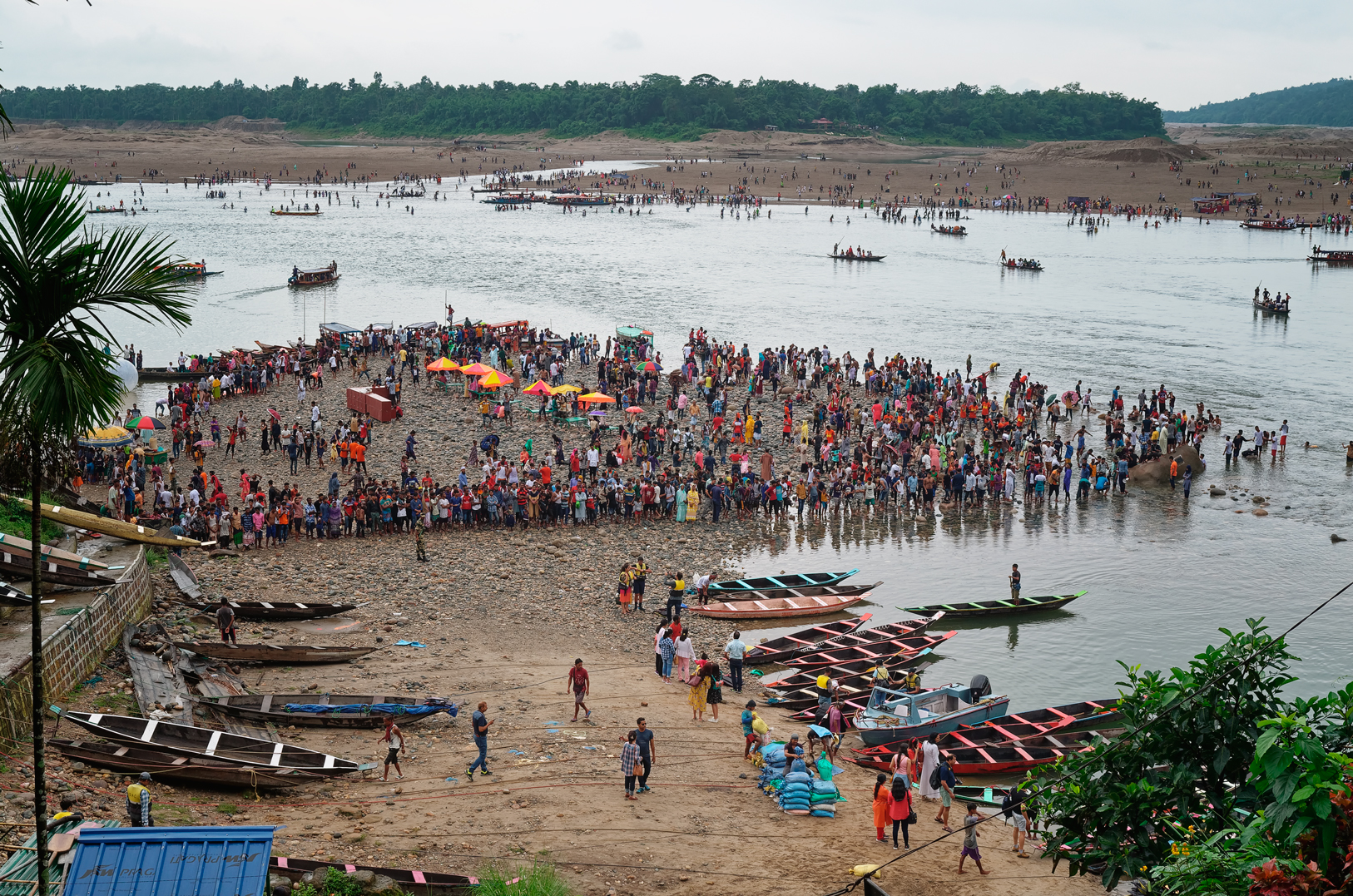
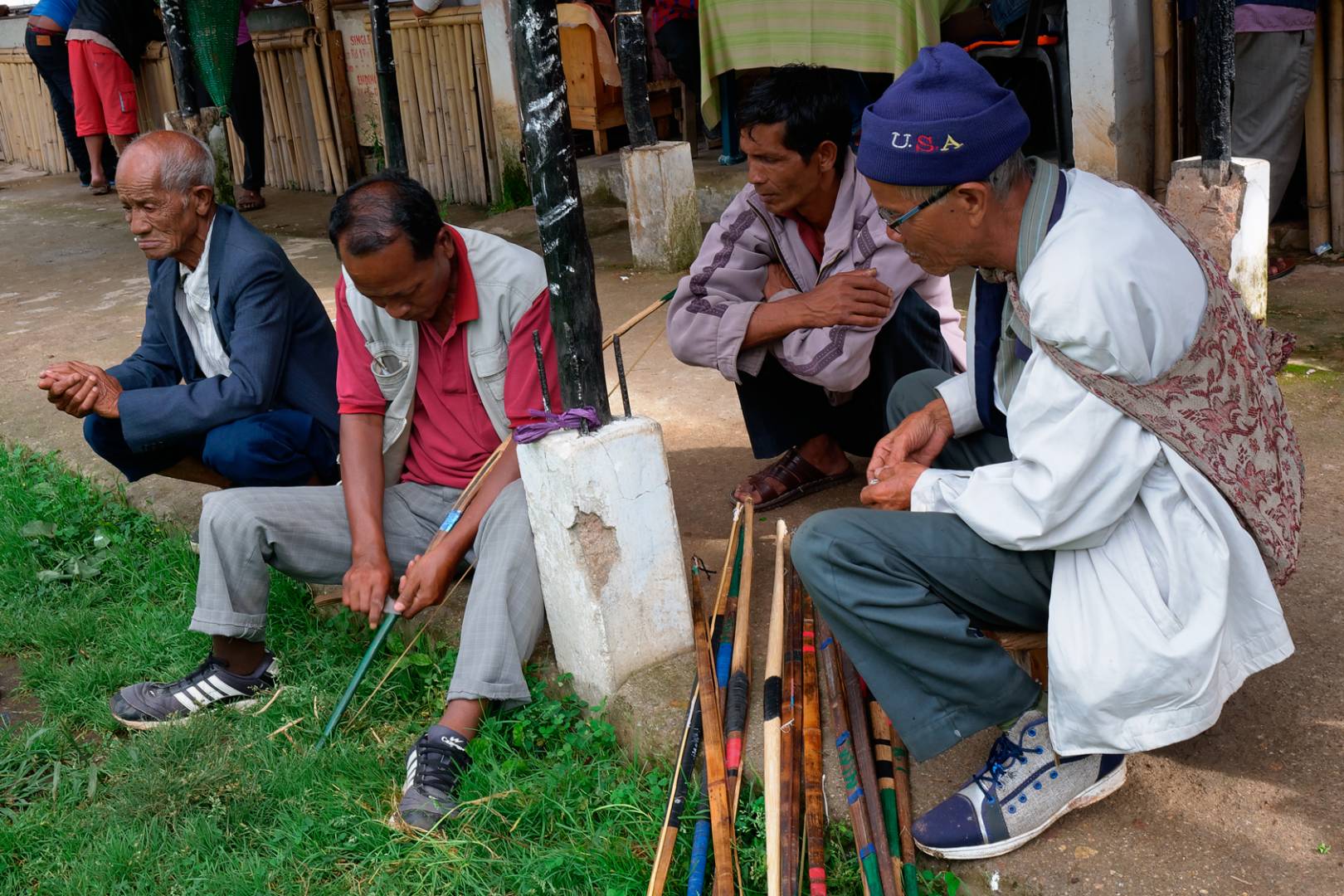
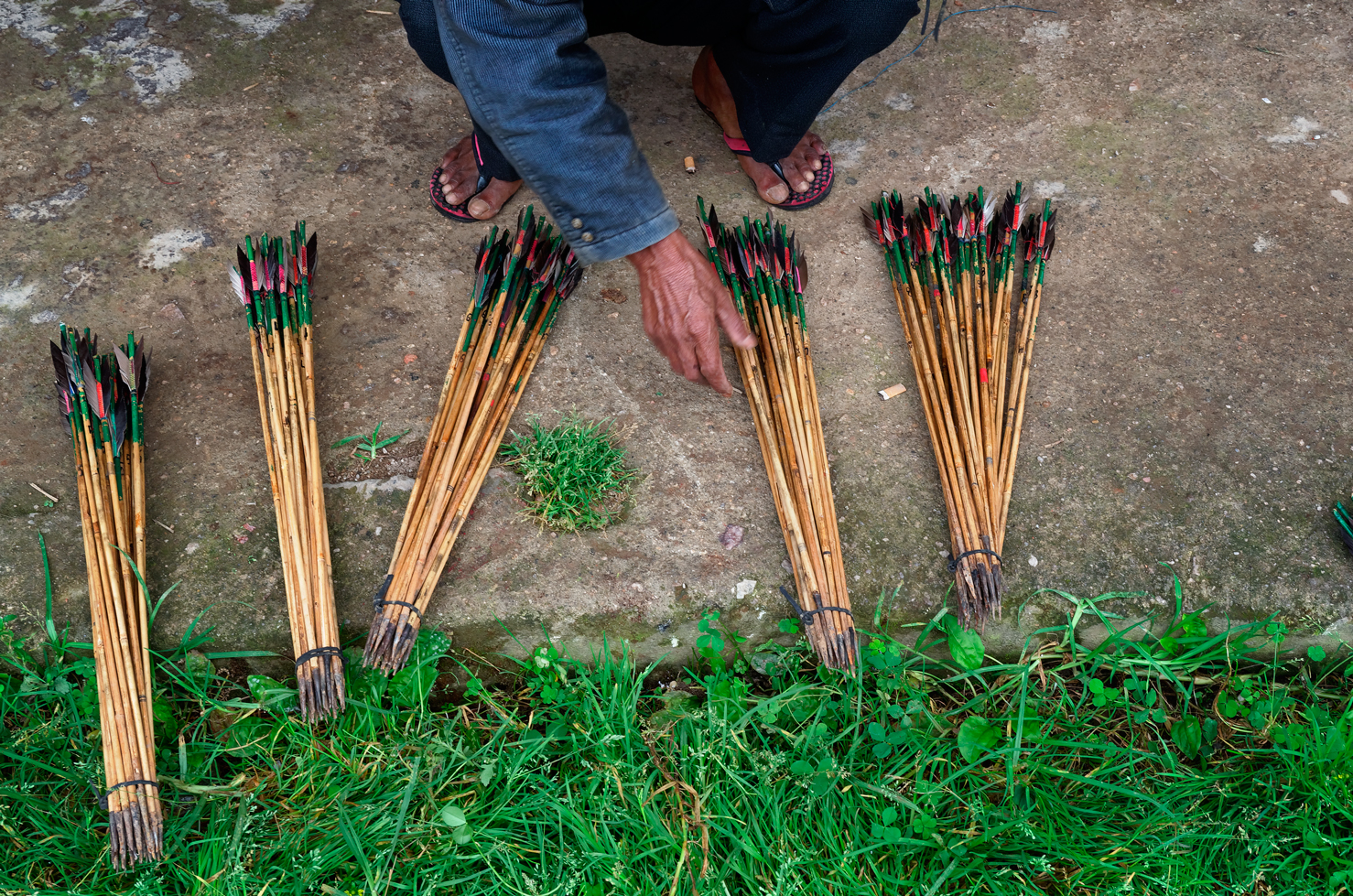
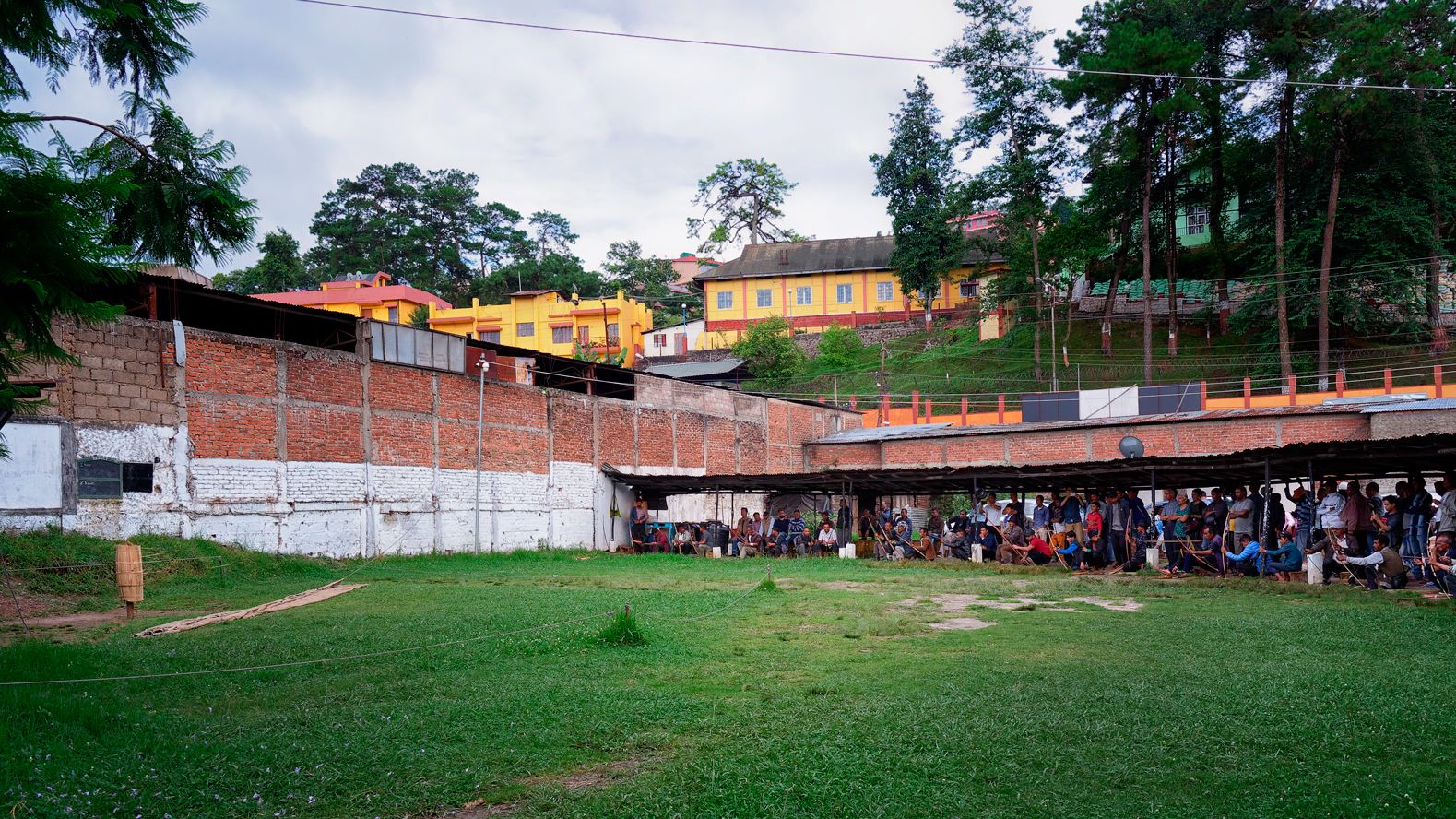
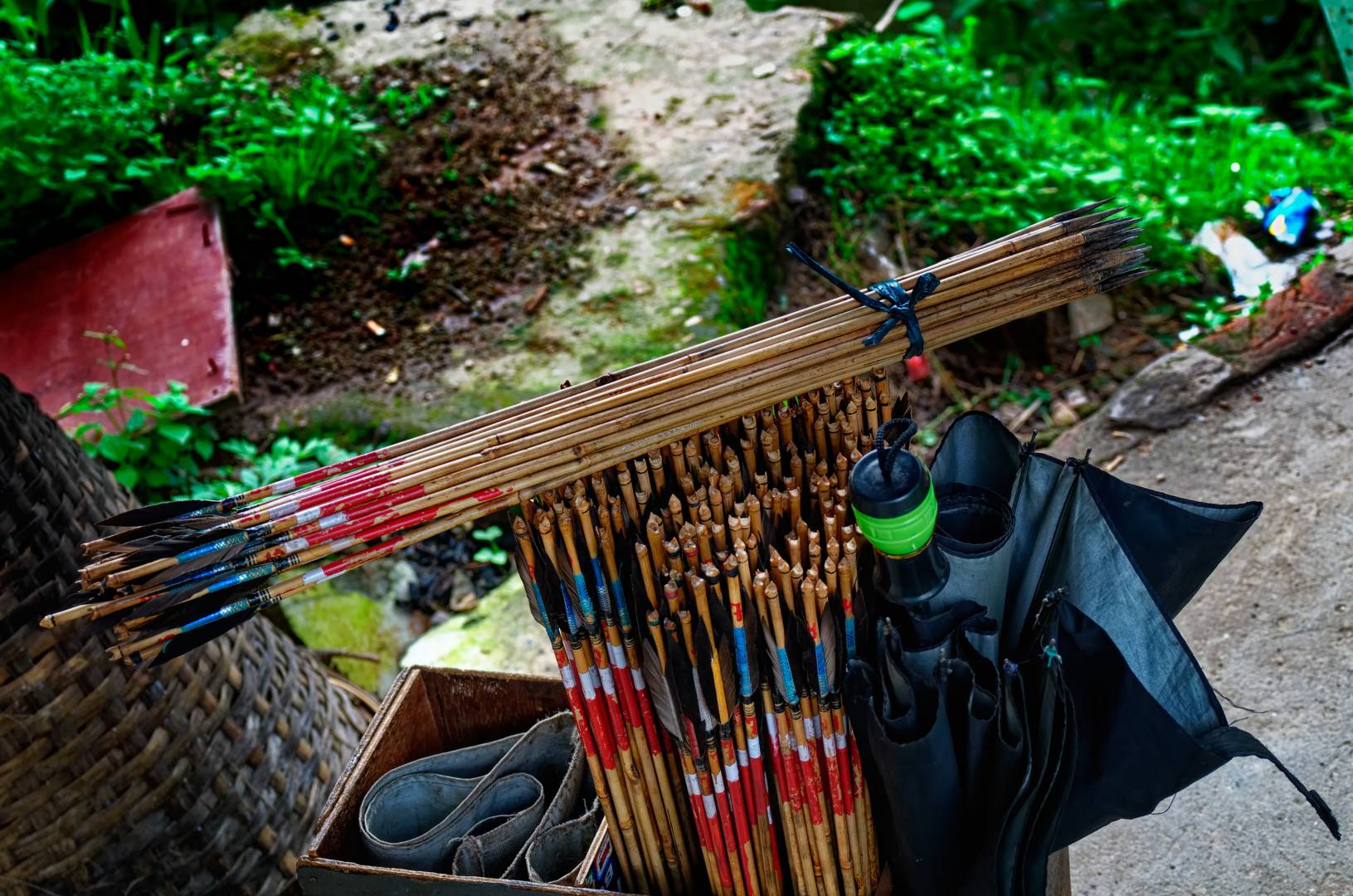
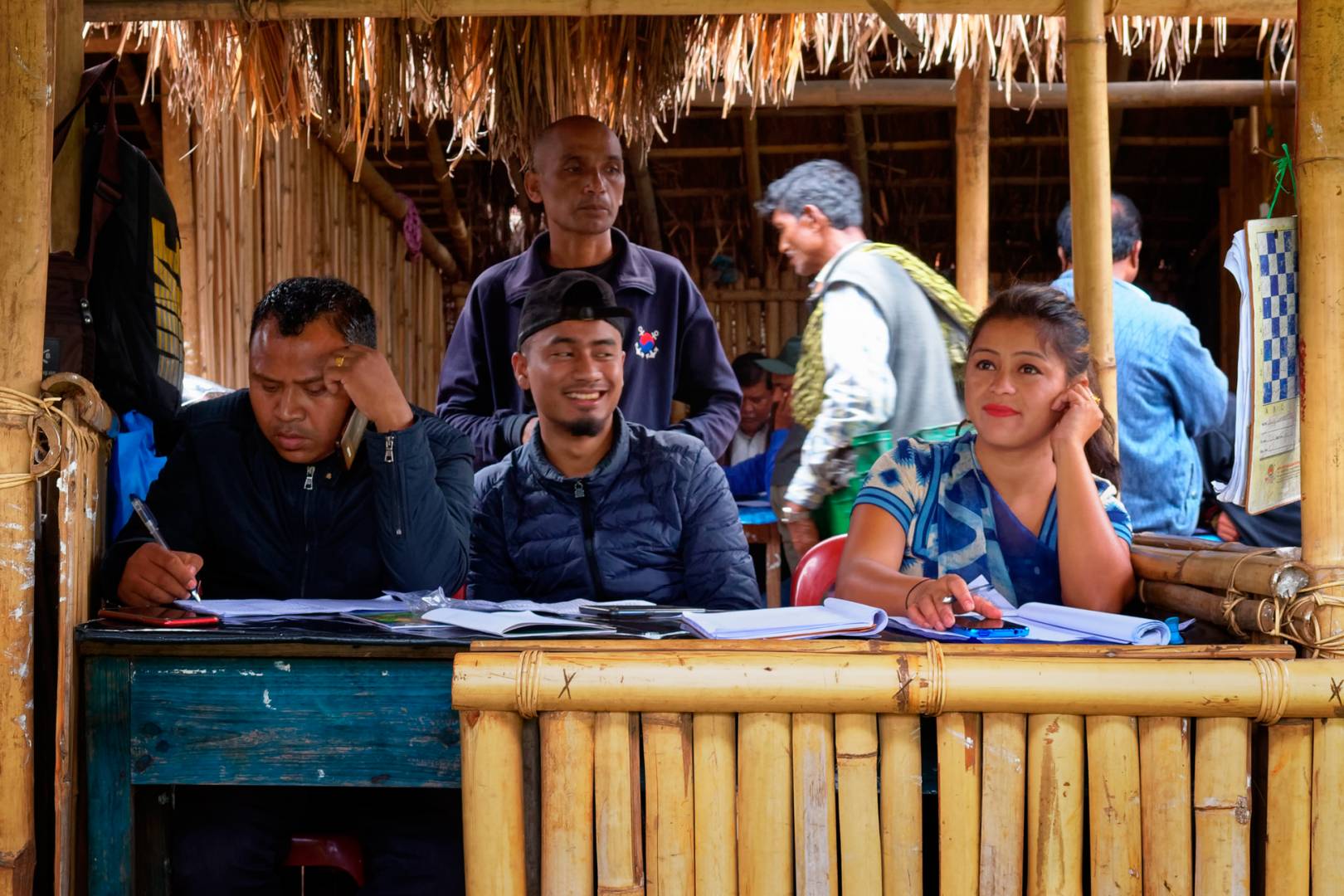
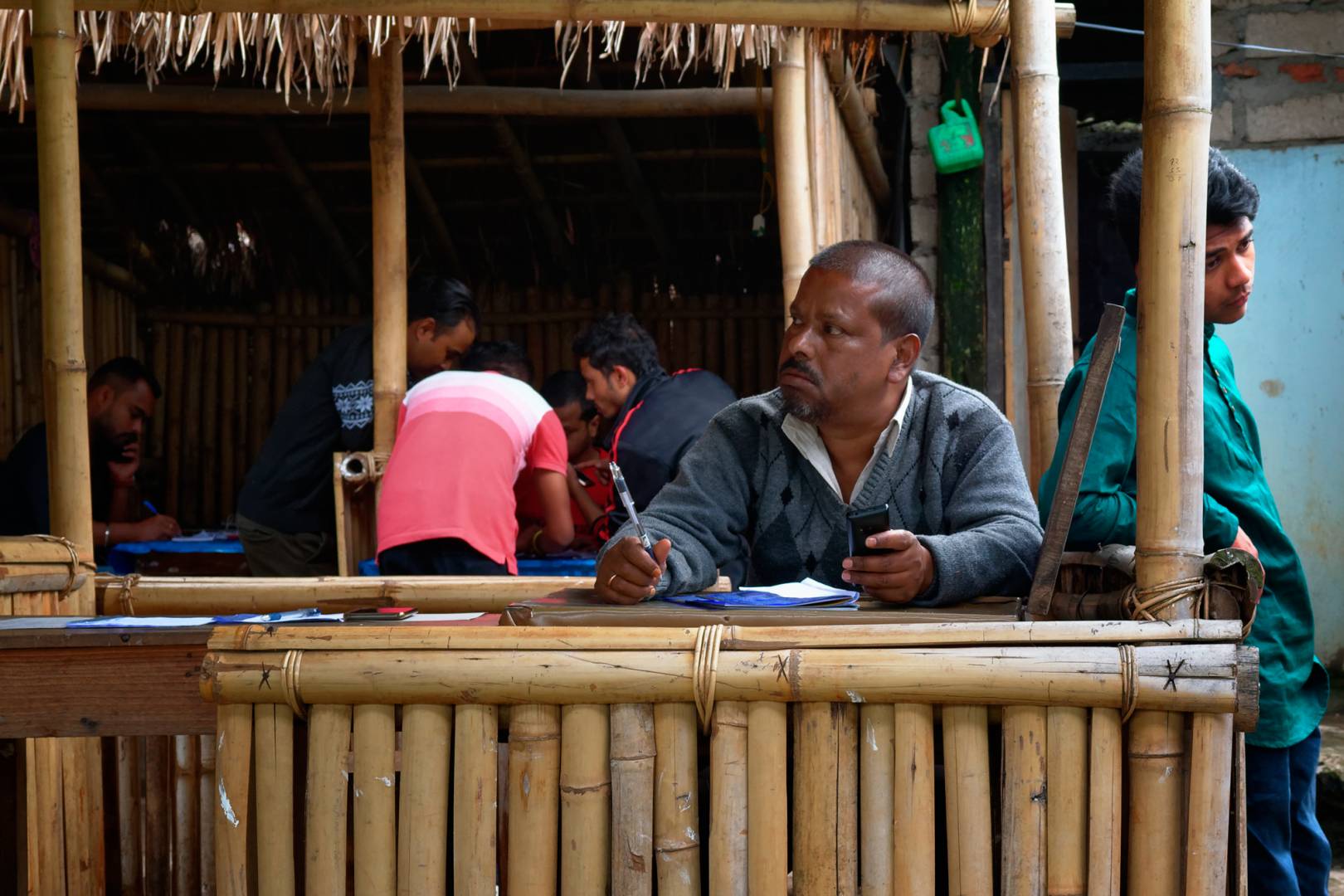
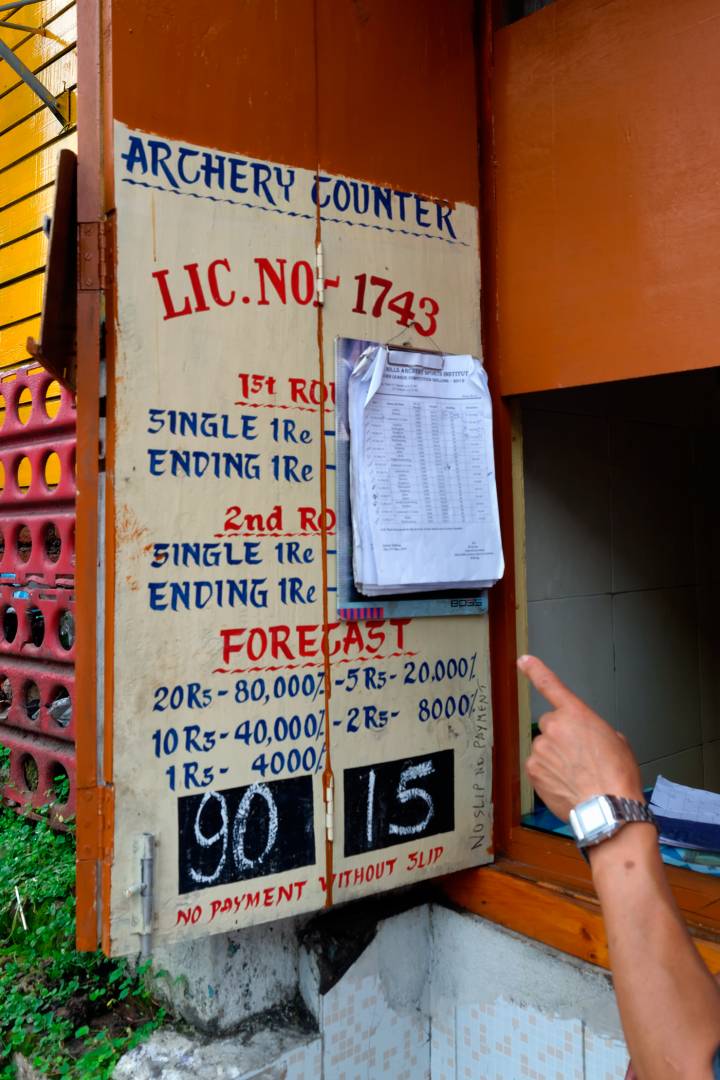
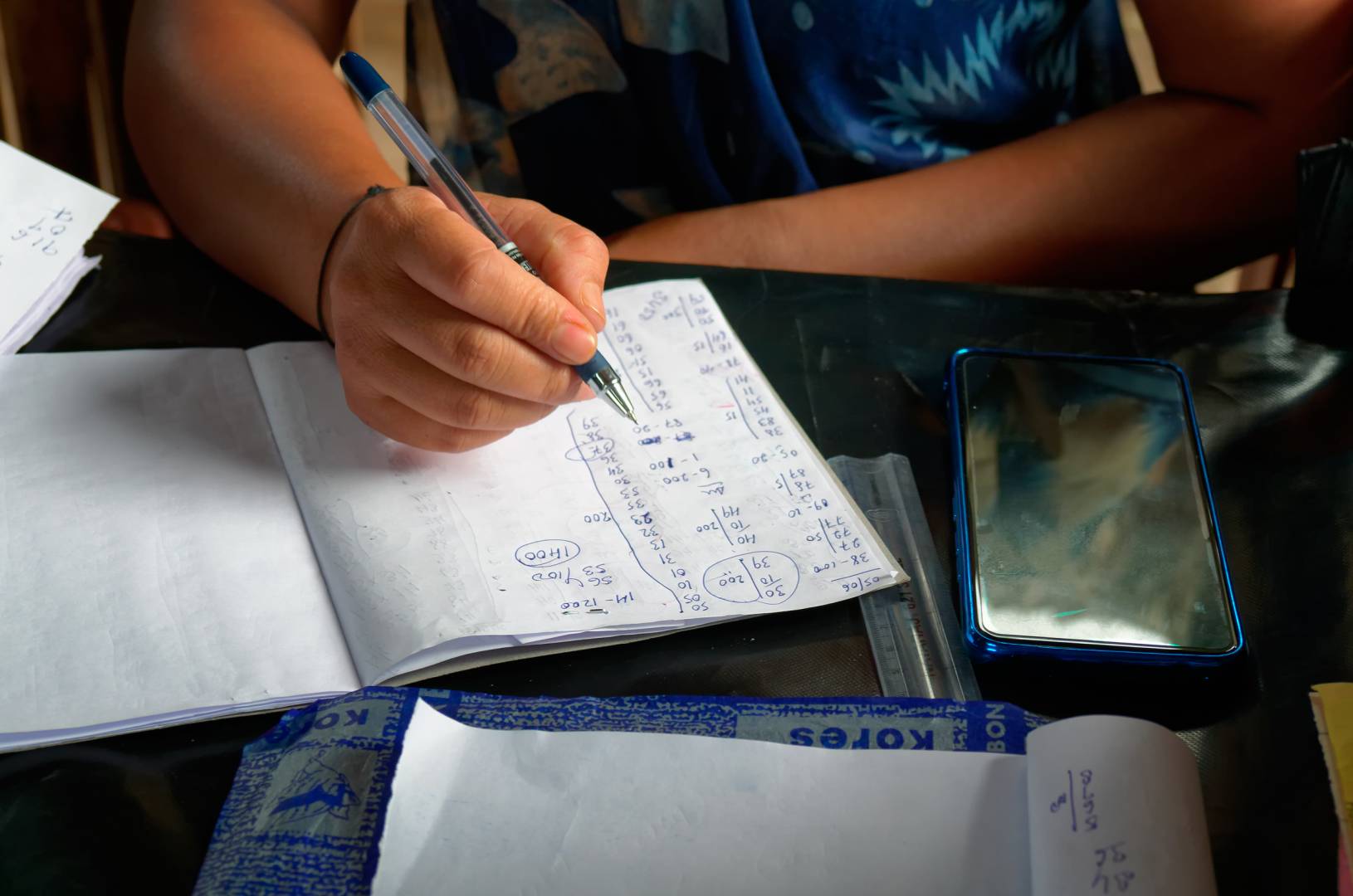
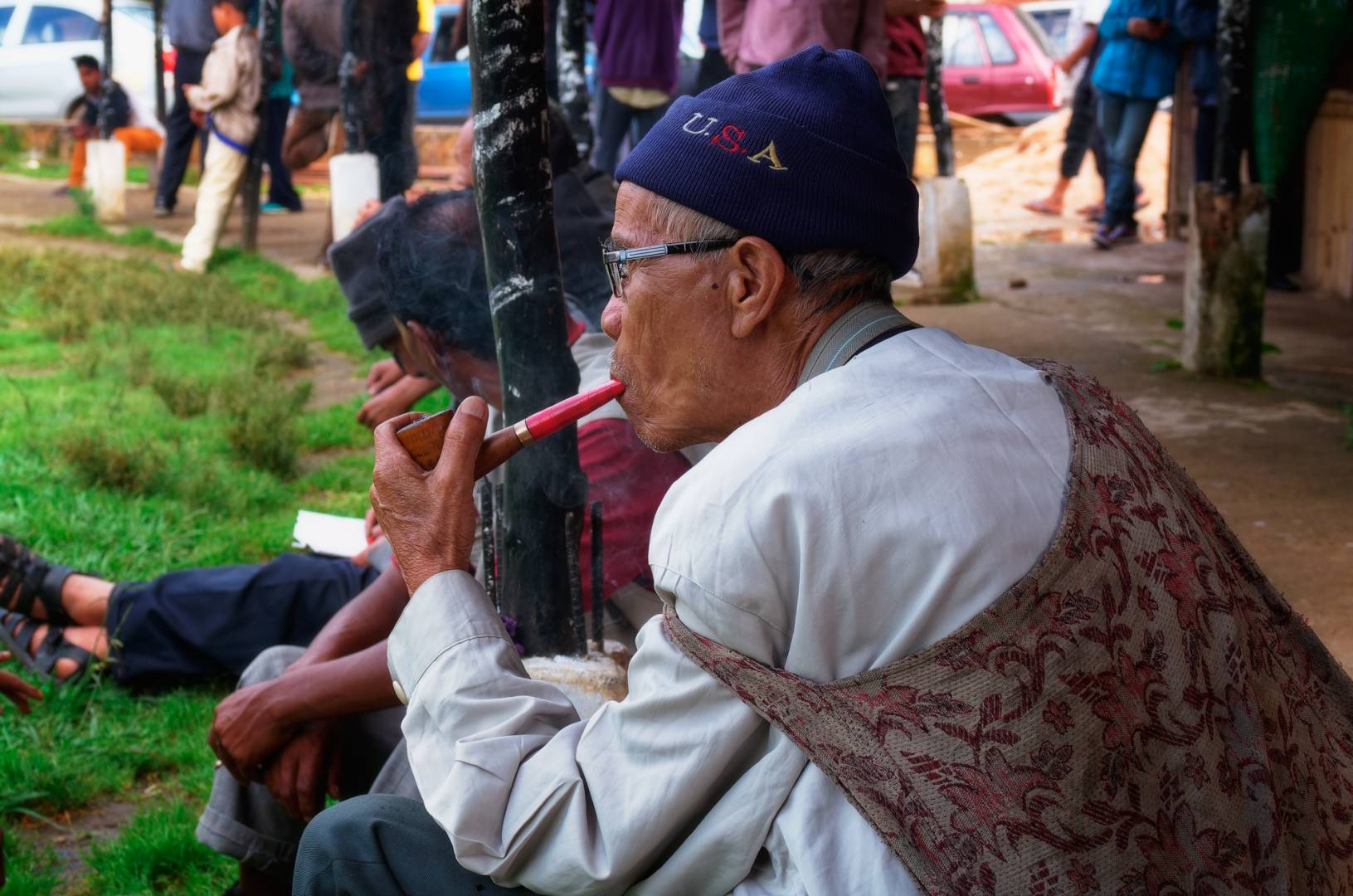
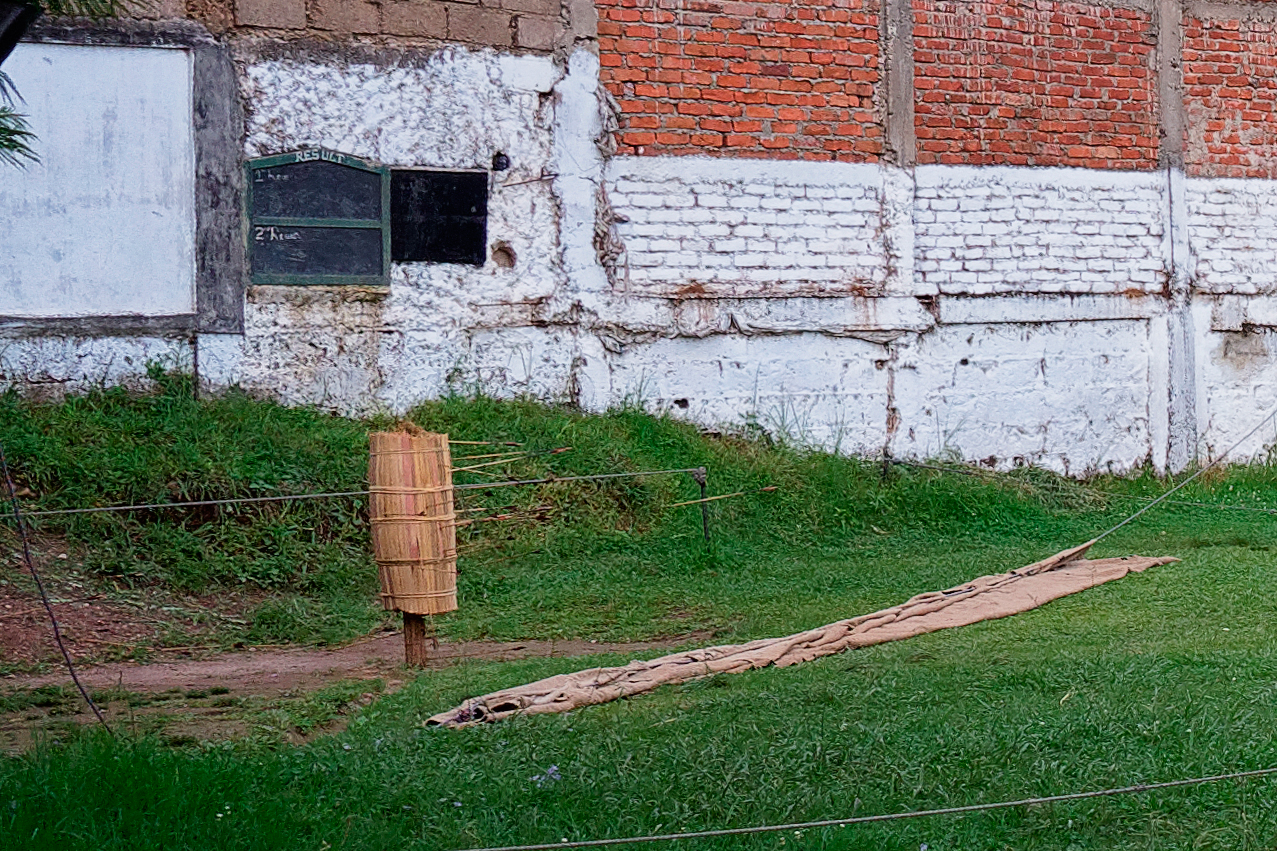
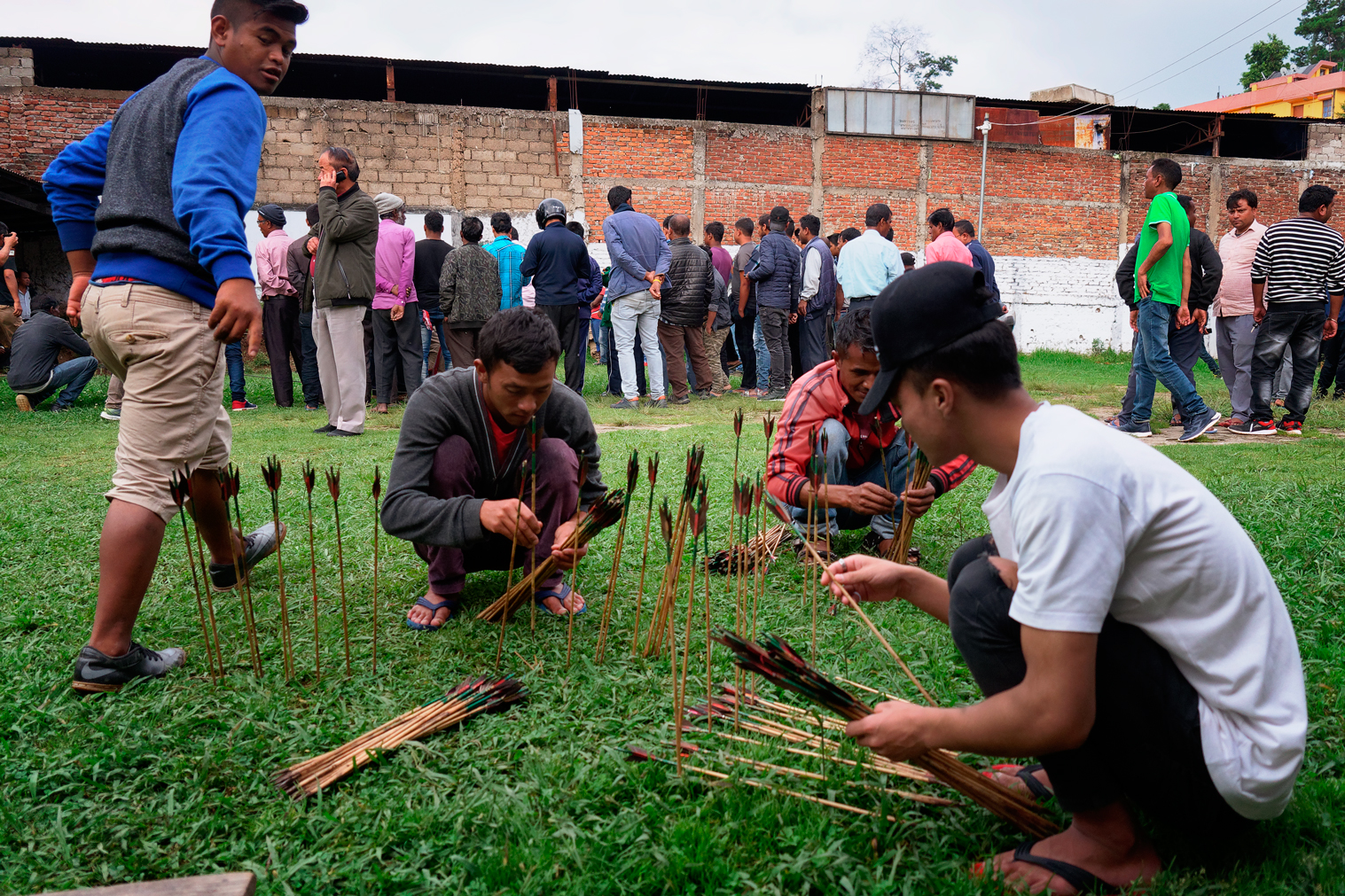
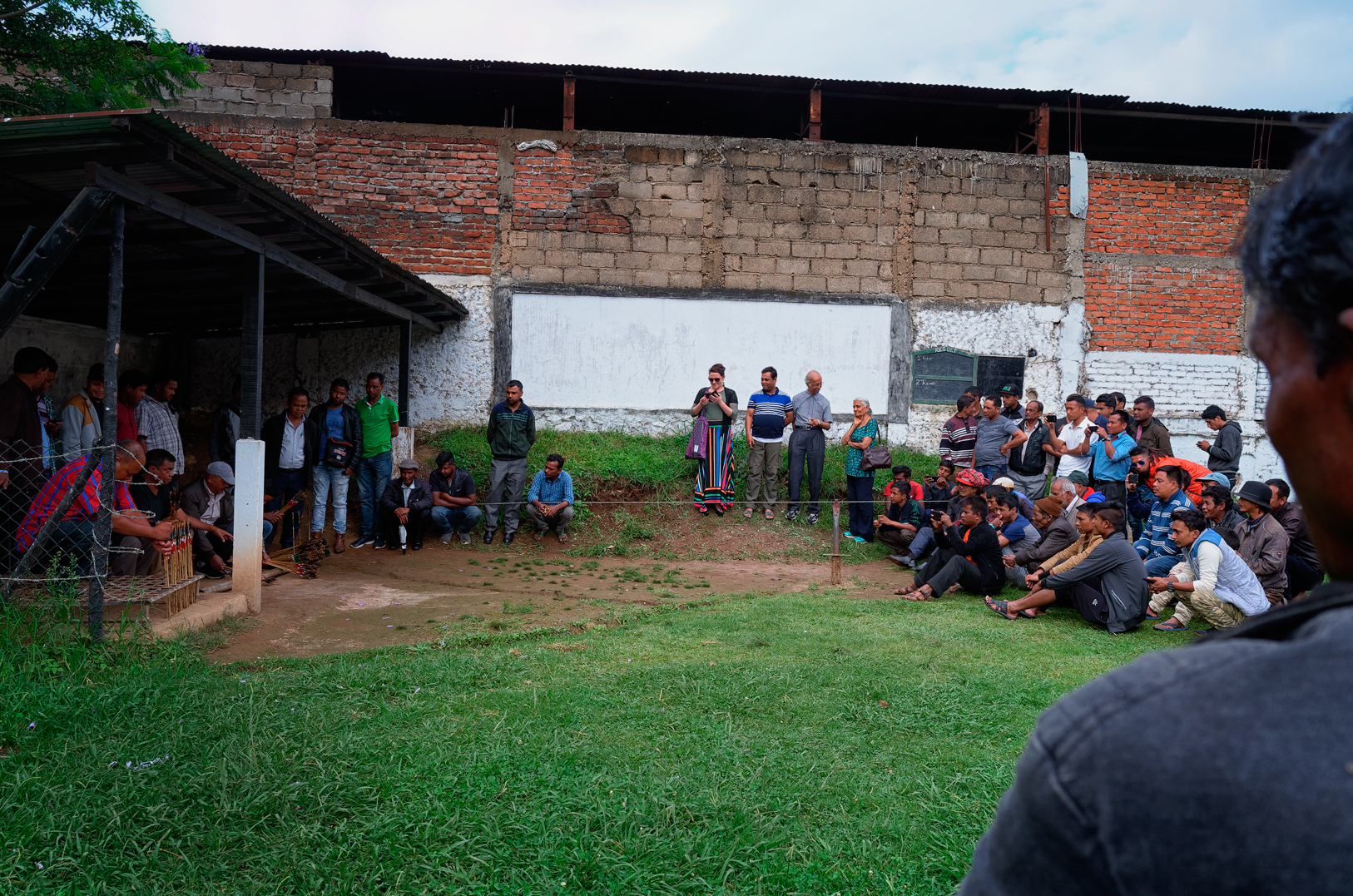
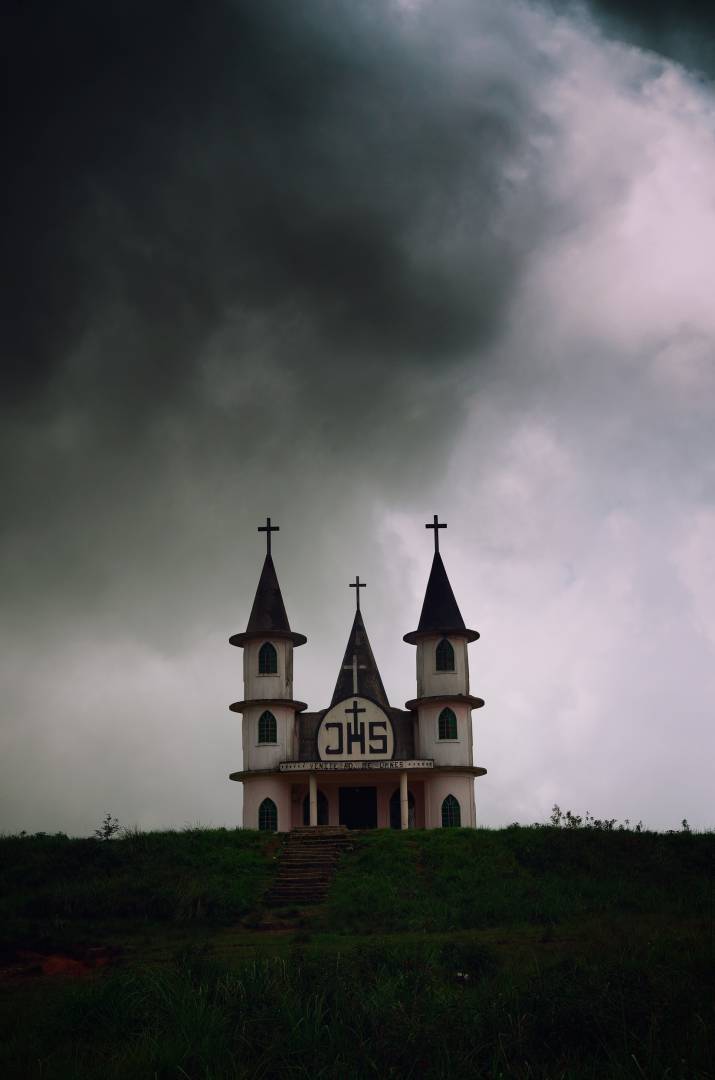
Outstanding travel documentary article, Farhiz. Another small part of the world that most will never see. thank you.
Jason
Thank you Jason. Much appreciated.
Thanks Farhiz for the link. I’ve seen some archers in Bhutan and also the huge darts they have.
Great article Farhiz, really enjoyed reading it. I’ve been to India many, many times; probably forty to fifty, but always in association with work. The only touristy place I’ve seen is the Taj. Before retiring I made a point of having a weekend in Delhi so that I could go there. I’ve always enjoyed my trips to India and would now love to go on holiday to have a good look around.
Many thanks for posting and best regards.
That is a serious number of times. If you’re in Delhi again please do get in touch (and that goes for everyone here).
Many thanks Farhiz for some excellent pictures and story of one of your favourite places.
The actual “Teer Pitch” is a really interesting sight, somewhat reminiscent of “short tennis”, but bathed in that glorious yellow light of India.
I have just acquired an old Panasonic LX5 with an EVF that works in similar fashion to that on the X-Vario, £80 for a complete CCD outfit with a Leica lens! The difference between this and the LX3 which was one of my earliest digital cameras, is like night and day, and I will definitely be using it as a holiday snapper, with its 24-90 equivalent zoom.
Mind you, the X-Vario is special, and must be included on anyone’s list of “proper cameras”, that lens is a masterpiece.
Thank you Stephen. Does the zoom lever on the LX5 work similarly to the one on the LX100? One could set it so that each toggle would set the zoom to a prime focal length, 35, 50, 75mm. I loved that feature.
Oh and one word of caution, the zoom lens is susceptible to dust particles. I found that out to my detriment taking pictures when waiting for an earthmover to clear the road of a landslide once.
Sure the LX 100 or Leica D-Lux typ 109 are dust prone. I guess any collapsible lens is dust prone unless you protect them with filters and hoods. I forgot to ask you yesterday. Does teer differ from the archery competitions in Sikkim or Bhutan?
Jean, from this article it looks like it does: https://www.npr.org/sections/parallels/2018/02/11/584542136/bhutans-alcohol-fueled-archery-it-s-nothing-like-the-olympics. The archers in Bhutan shoot a considerable distance. Fascinating stuff.
Hi Farhiz, indeed it does, it is very handy. It also holds the last used zoom setting between power-cycles, so if you are (say) a habitual 35mm shooter, you arrive at that focal length as soon as you switch on.
As far as dust is concerned, I don’t have anything dramatic in my example. and it is by no means, pristine, logic would suggest a tendency though.
This feature seems to be common with most of Panasonic’s pocket cameras and I also love it. It is on the latest D-Lux 7 as well. I’ve often said that the ability to lock in a specific focal length, say 35mm, allows you to mimic the use of a prime lens and to experiment. For anyone used entirely to a zoom camera and wishing to experiment with the use of primes, these little cameras are excellent learning tools.
Thanks Farhiz for this very informative piece and I add my welcome to you both as a new contributor and as an X Vario user. I think you have been able to catch such evocative photos in good part because of the relatively inconspicuous size of the camera. I look forward to future articles about India.
Thank you kind sirs, for the warm welcome and your words of appreciation. Many thanks to Mike for allowing me this opportunity. And for his editing and placement of the images – specially the two where the hands are visible and connecting them together. This is great encouragement so thank you all again.
Welcome Farhiz. Your story is fascinating and the pictures are excellent illustrations of the whole event. I can also see from the last two pictures you have an excellent eye for light and composition the curve of the staircase makes for a very strong picture of the church. Well done!
A fascinating article. It is great to learn new things such as teer and get an interesting glimpse about a different culture. Looking forward to more articles.
Thank you Farhiz for your article. Your writing and images succeeded in taking us with you to the Teer contest. Enjoyed it.
Welcome Farhiz, sir, you and your traveling companions. I had been emailing a friend about India, over the week end. Your country has always fascinated me, the Khyber Pass, the GREAT GAME between the British and Russians, Sepoy Rebellion, great religious pilgrimage to Ganges River to bath, enough of my rants! Really enjoyed the sporting event bowand arrows, and bookies. Sports and betting share the same bed. Keep your stories coming. Thank you
A most interesting article, Farhiz. When I travelled around India on business, it was mainly to the large commercial centres. On holiday, my wife and I visited Rajasthan and Kerala. Despite all the wonders of Delhi, Bombay, Madras and Calcutta (as they were then named) I realised I had scarcely seen beneath the surface of a wonderful country and its wonderful people. This is made clear to me once again with your absorbing account of your travels in this vast North East region. The rules of the archery contest must require extended study and even more so the betting! Anyway thank you for awakening happy memories of my own travels in India and making me aware of yet another aspect of India I knew nothing about. I hope we shall hear and see more of your travels in a future article. Namaste.
I learned a thing or two. I’d never heard of Teer but I was curious when Farhiz mentioned betting 20 bucks. Did he mean US dollars, I thought. But then he told me that the rupee is colloquially referred to as “a buck”. Something new, something borrowed, something very colourful.
Yes, David, India requires repeated visits to really get a sense of her people, culture and customs. Take Delhi, for instance, where I joined a heritage walking group some years ago and despite being on a dozen walks with them I don’t think I have covered everything there is to see in the city. That would be true of any large city. If Mike is open to a future article on Delhi then I’ll try and make something of it.
Yes Farhiz. You say you don’t carry a camera around in Delhi. But it is a fascinating city and most of us have very little impression of what it must be like. A Delhi theme would be wonderful — especially seen through the ideas of a resident. You will note that almost all our travel features are written from the visitor’s perspective.
Mike, I’ll expand on the Delhi theme in a mail to you. On these heritage trails I did carry one since that was my primary purpose. So hopefully there’s something that can go into a future article on Macfilos.
Thank you, Farhiz
What a joy to see you as a new contributor to Macfilos. And special thanks for giving us insight into life in NE India and a sport of which I had never heard. I particularly liked the picture of the Bookies waiting for custom. So natural with lovely colour and lighting. Another example of how competent is the X Vario when let loose in new territory.
Thank you and Welcome!
I second your welcome to Farhiz. It’s always nice to welcome a new contributor to the Macfilos fold and I, too, hope to see more of Farhiz in the future. An added attraction for me is that he writes so well that his English requires so little editing. This also reminds me to encourage anyone else reading this who isn’t already a contributor (David A, for instance….) to consider submitting a few words and a selection of photographs. Our scope now ranges so widely throughout the world that I never cease to be amazed at the variety. North-East India one day, French Alps another, Australian car shows another. So please, do send in your ideas.
A very informative and “off the beaten track” article. I particularly like the archer smoking his pipe. I’d love to see an article on your home city Dehli. Welcome to Macfilos’ contributors. Thanks for sharing
Thank you for taking some of us – me at least – to an unknown corner of the world and offering us some superb “documentary” photos with that superb camera, the X Vario. It deserves to be the most mourned of discontinued cameras! Personally, I stick to autofocus and aperture priority. Like you, I love the increased versatility of the EVF (courtesy Olympus!).
Ahh, but I like the idea that it is discontinued – makes X Vario users an exclusive club, one where, I believe I read on this site, we could all meet in a telephone booth.
To paraphrase Churchill (again): Some discontinued camera, some booth!